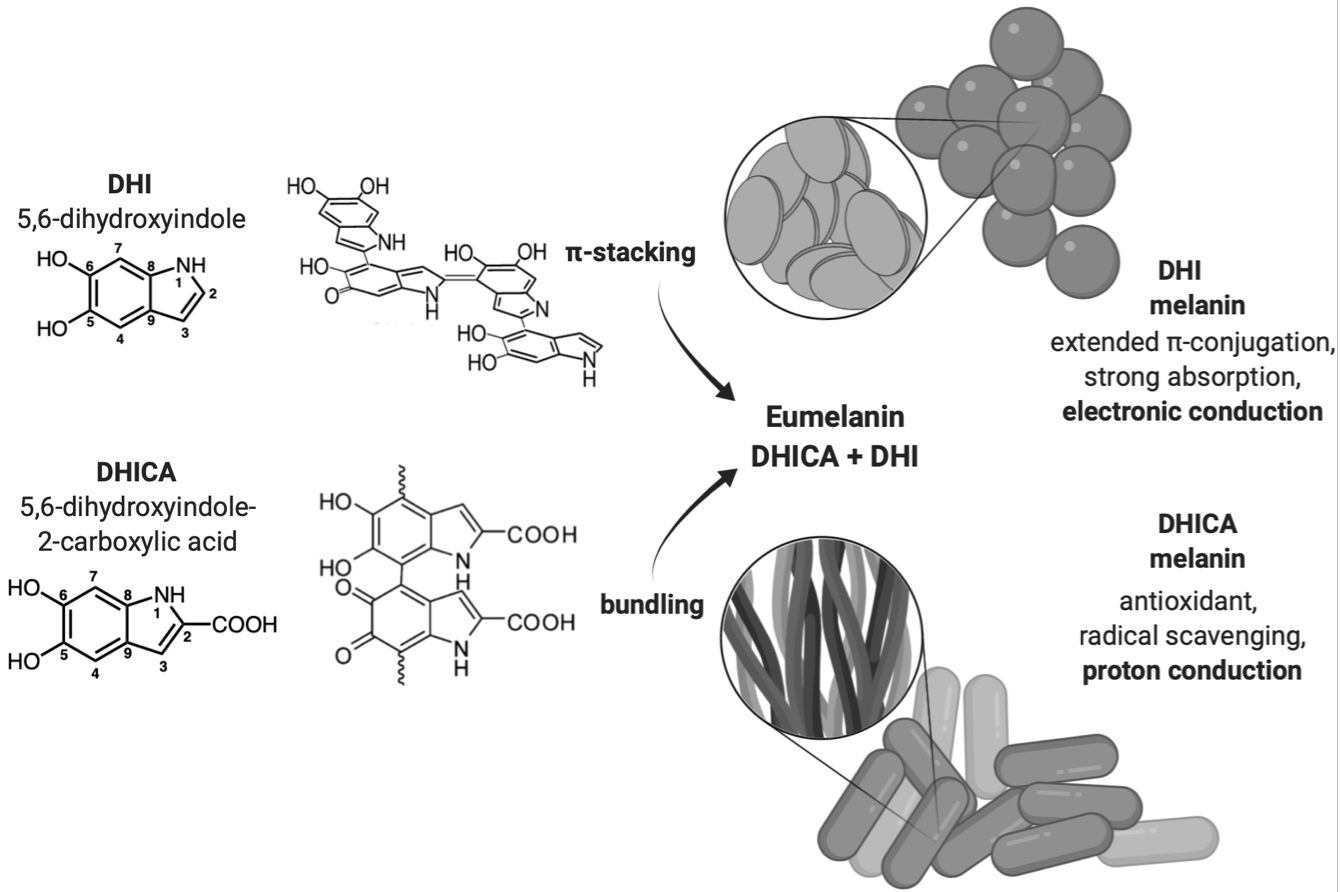MSCA-IF

Eumelanin is the black pigment in our skin, hair and eyes that acts as our natural photoprotector and radical scavenger. It is made of amorphous aggregates of 5,6-dihydroxyindole (DHI) and its carboxylic acid (DHICA). Synthetic polymers derived from DHICA or DHI are promising biocompatible, non-cytotoxic components in bioelectronic or optoelectronic devices: they feature both electronic and protonic charge carriers, can be easily prepared and incorporated into hybrid materials.
However, the lack of structural information due to a low solubility and chemical/structural disorder have thus far limited a full elucidation of the electronic conduction properties of eumelanin and eumelanin-inspired materials. This has hindered not only its use in bioelectronics, but also a full understanding of the biological role of this pigment, which is believed to play a role in Parkinson’s disease.
I am leading an ambitious research project that aims to unravel the structure, self-assembly and electronic properties of eumelanin-derived materials in order to boost its exploitation as mixed conducting material in bioelectronic devices. My model takes into account the chemical disorder of eumelanin (tautomerisation, oxidation) and aims to elucidate its effect on the electronic structure and charge transport characteristics of this material by integrating experimental data with kinetics, electronic structure calculations and molecular dynamics simulations.
Check out a poster I presented at ACS 2021 summarizing my ongoing research on DHICA and DHI melanins.
